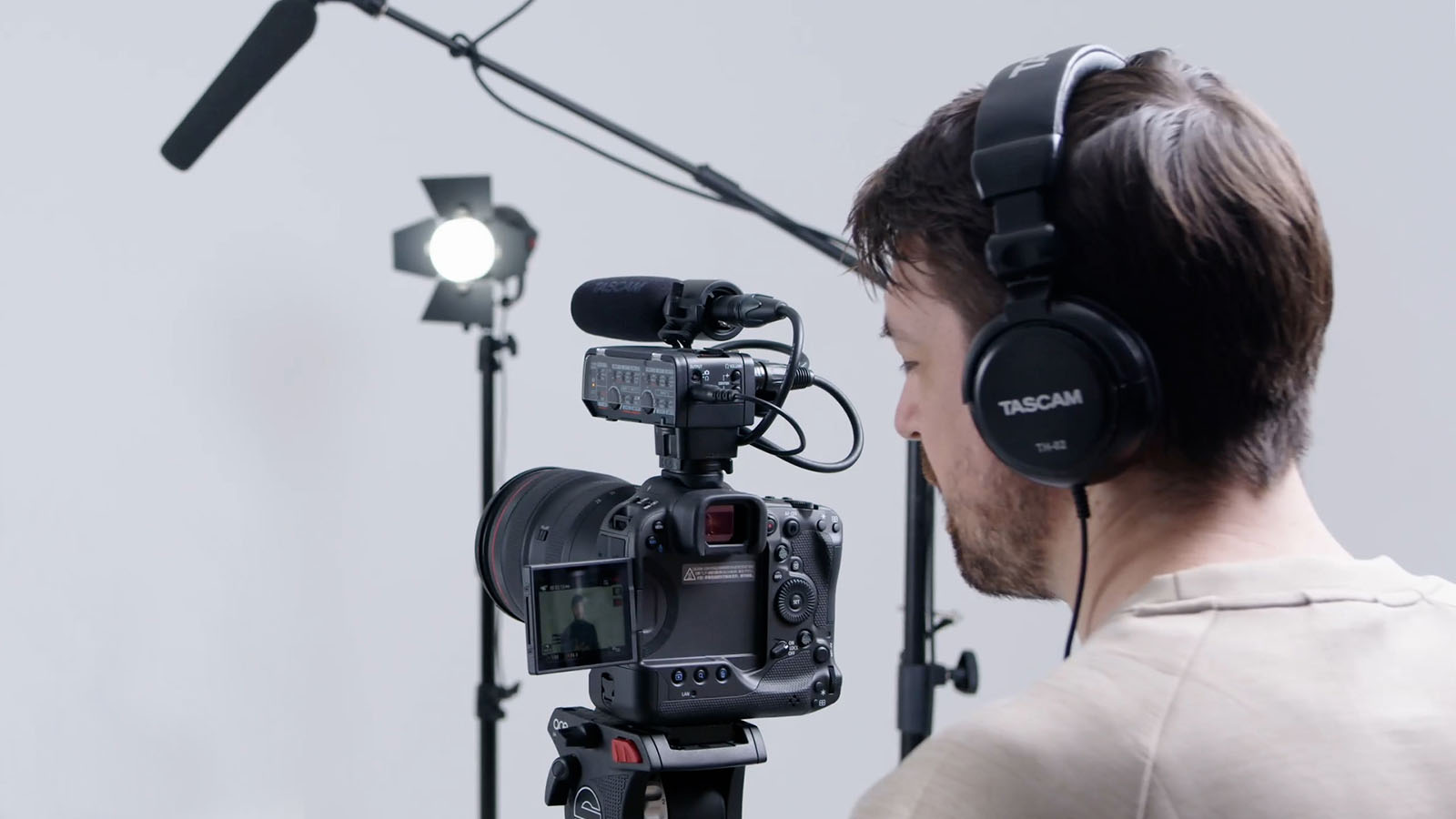
When it comes to choosing a DSLR camera microphone, there are many factors to consider that will impact your microphone choice. Are you shooting in an acoustically-controlled studio, or out in the noise of the real world? Do you need to capture the wide stereo ambience of a nature scene, or do you need a focused microphone that will pick up a single voice in a busy street scene? Anticipating the different scenarios you’ll be shooting in will help you make smarter choices when selecting a DSLR camera microphone. In this article we’ll explore some different DSLR camera microphone types, and help you determine which style is best for your content creation.
Shotgun Mics For Laser-Like Precision
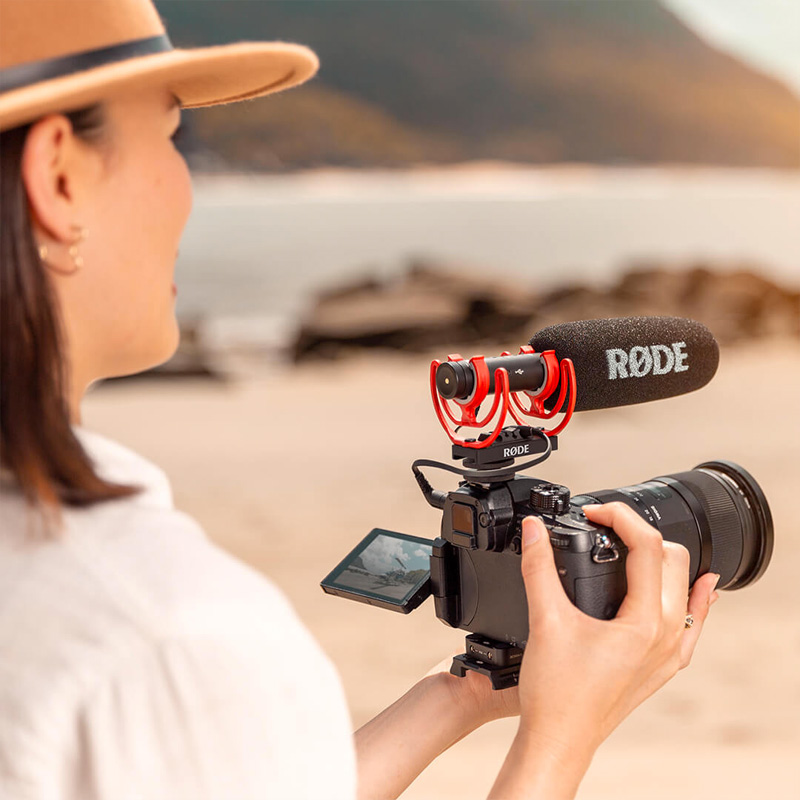
A shotgun microphone like the Rode VideoMic NTG is designed for long reach and narrow focus as your talent can be many feet away in a noisy room, and a shotgun microphone will do a good job of capturing their voice with detail while rejecting most of the room noise. The Rode VideoMic NTG features an included shoe/pole shockmount (which will help eliminate any noise from handling your DSLR camera), a rechargeable battery, and functions you need to optimize your sound quality such as a bass roll-off filter and a high-frequency boost. Due to the highly directional nature of shotgun microphones like the Rode VideoMic NTG, you can be sure you’ll be capturing high-quality audio from whatever you point your DSLR camera at, while rejecting noise from anything outside of your shot.
Capture LifeLike Soundscapes With A Stereo Microphone
Whether you’re capturing the natural ambience of a nature setting, or the excitement of race cars throttling down the track, a stereo microphone like the Shure MV88+ DSLR camera microphone will capture the scene with impressive width and detail. In contrast to the highly-focused directionality of a shotgun microphone, a stereo mic is designed to capture a wide stereo field with separate left and right microphones. Stereo mics excel when you need to capture the feeling of an environment, conveying the atmosphere and experience of actually being there in the moment. A stereo DSLR camera microphone is also an excellent choice when capturing musical performances, providing a more natural soundstage and fuller sound than your camera’s built-in mic can offer. The Shure MV88+ mounts directly to your DSLR camera, and it includes the free ShurePlus MOTIV app that allows you to adjust stereo width, gain settings, and other crucial functions directly from your smartphone.
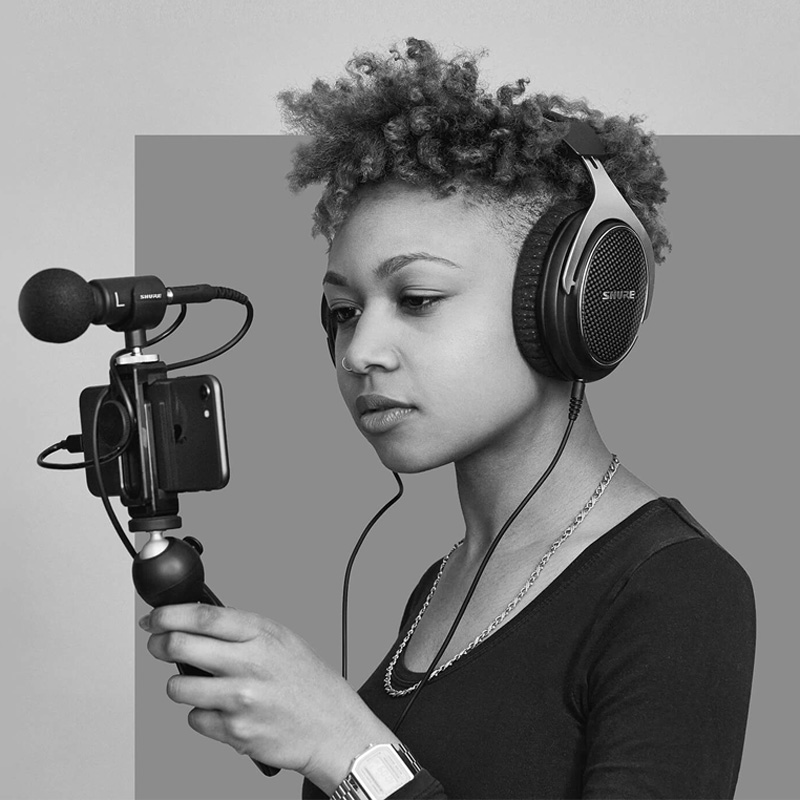
Hand Your Talent A Handheld Mic
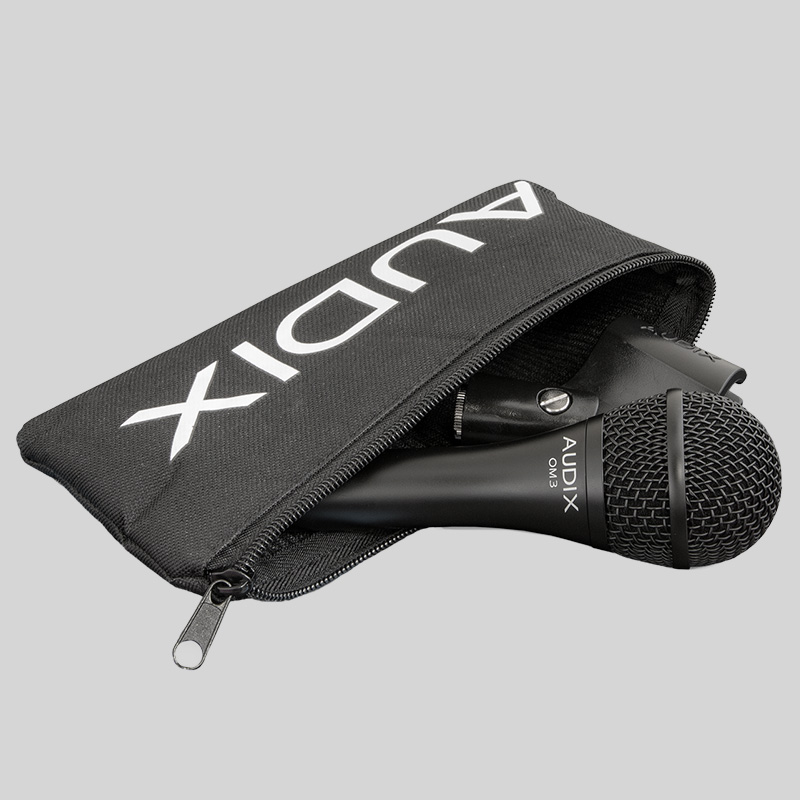
For interviews in busy environments like a convention hall or outdoor festival, the best way to ensure consistent and clear audio capture is with a handheld microphone like the Audix OM-3 dynamic microphone. With its highly-directional hypercardioid pickup pattern, you’ll capture high-quality audio from your subject while rejecting most of the noise in the environment. When choosing a handheld microphone for your DSLR camera, it’s important to choose a dynamic microphone as opposed to a condenser microphone. A condenser mic requires a separate preamplifier that also serves as a power supply for the microphone, which can complicate your videography setup. Dynamic handheld microphones like the Audix OM-3 can be plugged directly into your DSLR camera’s microphone input with no outside power source required and all you need is the appropriate cable to connect your mic’s XLR output to your camera’s 1/8-inch microphone input.
Clip-On Microphones For Hands-Free Convenience
When your content is focused on a single subject, but they need to keep their hands free, a clip-on DSLR camera microphone like the Rode RODElink LAV is a smart solution. Also known as lavalier microphones, clip-on microphones are the perfect way to keep your audio recording focused on your talent. These compact microphones can be clipped to your talent’s shirt or collar, ensuring focused voice capture without requiring them to hold a handheld mic or position themselves in front of a mic stand. And because the clip-on microphone is always close to your talent, and moves with them, you’ll enjoy a high-quality voice recording with a minimum of room noise. As clip-on microphones are small and sensitive, durability is important and the Rode RODElink LAV’s rugged mounting clip and Kevlar-reinforced cable make it a popular choice among content creators.

Broadcast Microphones For Studio Settings
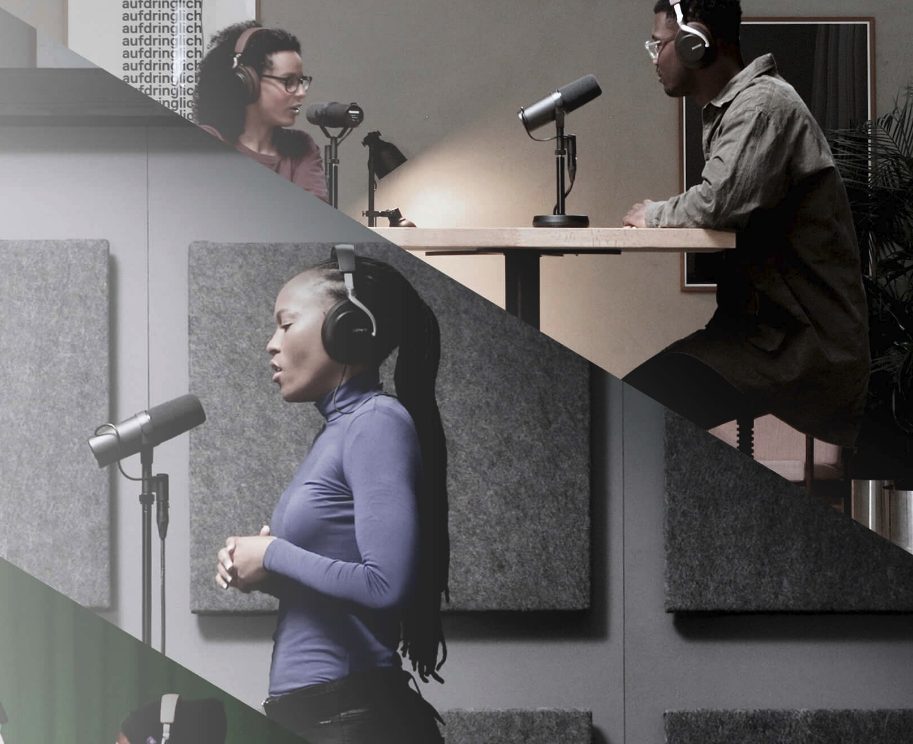
When you’re recording content in a controlled studio environment, a desk-mounted broadcast microphone will provide greater fidelity and focus on your talent’s voice, while avoiding the distant, “roomy” sound that your DSLR camera’s built-in microphone will capture. You’ll see the industry-standard Shure SM7B dynamic microphone used in countless vlogs and livestreams, and for good reason as the Shure SM7B delivers outstanding sonic detail while rejecting most room noise, offering studio-quality sound even in less-than-perfect acoustic settings. Pair it with a convenient boom arm, or a compact desktop mic stand, and you can turn practically any room into a broadcast studio. Be aware that many broadcast microphones are designed to be low-output microphones, and your levels may appear to be a bit low when used with soft-spoken talent. An in-line microphone booster like the Cloudlifter CL-1 Mic Activator is designed to bring out the full detail and dynamic range of mics like the Shure SM7B when used with quieter sound sources, and will ensure you enjoy the maximum fidelity from low-output microphones.
Pro Tip: Understand Microphone Directionality

When searching for a DSLR microphone, one of the most important specifications to understand is its pickup pattern, or how directional its audio pickup is. Said another way, does the microphone capture sound from all directions equally, or does it have a focused pickup pattern that helps reject unwanted room noise? Regardless of the type of DSLR microphone you choose, understanding its directional characteristics is crucial to capturing the best audio possible. To simplify the topic, we can look at any microphone as having one of three types of pickup pattern — omnidirectional, unidirectional, or bi-directional (figure-8).
Omni-Directional Mics
An omnidirectional microphone effectively picks up sound equally in all directions — sounds that reach the microphone from any angle are captured accurately. This makes an omnidirectional pickup pattern a good choice when you need to record the sound of an environment, or when multiple people are speaking into a central desktop microphone. Likewise, an omnidirectional DSLR microphone would be a poor choice in a noisy environment, or in a boomy room with too much natural reverb.
Uni-Directional Mics
A uni-directional microphone is designed to pickup up sound clearly from certain angles (such as in front of the microphone), while rejecting sounds from other angles (such as the rear of the microphone). As you’re researching microphones, you’ll find various degrees of directionality: cardioid, supercardioid, hypercardioid are all types of directional microphones that you’ll come across. It would be outside the scope of this article to discuss the differences between these microphone variations as the important thing to know is that a directional microphone will help you focus what sounds are being captured, while rejecting unwanted outside sounds. For noisy environments, rooms with poor acoustics, and many other applications, a directional DSLR camera microphone will help you focus your recordings for the best audio quality.
Bi-Directional Mics
A bi-directional microphone pattern, also referred to as a figure-8 pattern, is designed to pick up sounds from two opposing directions equally. Sounds arriving at the front or rear of a figure-8 microphone are captured clearly, while sounds occurring to the sides of the microphone are greatly rejected. Bi-directional microphones are often used in studio or live sound applications when rejecting sounds from the side is critical, such as close-miking horn players standing closely together to minimize mic bleed. A figure-8 microphone can also be a smart solution for capturing a conversation between two subjects sitting across from one another with a single microphone. While you may not encounter the bi-directional pattern as often as the unidirectional and omnidirectional patterns above, it’s important to know that it’s ideal for situations that require minimal sound pickup from the sides of the microphone.
Choose The Right DSLR Camera Microphone For The Job
It should be apparent that there is no one best microphone for every possible application, and even if there was, it certainly wouldn’t be your DSLR camera’s built-in microphone. The information in this article will help you start on the right path in choosing a better microphone for your videography, regardless of the type of content you produce. Consider the benefits of different microphone form factors, understand how a microphone’s directionality will affect your recordings, and you’ll be better-equipped to choose the best DSLR camera microphone for any video shoot.


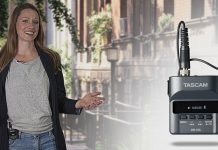
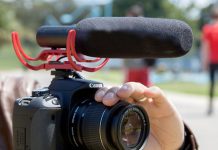

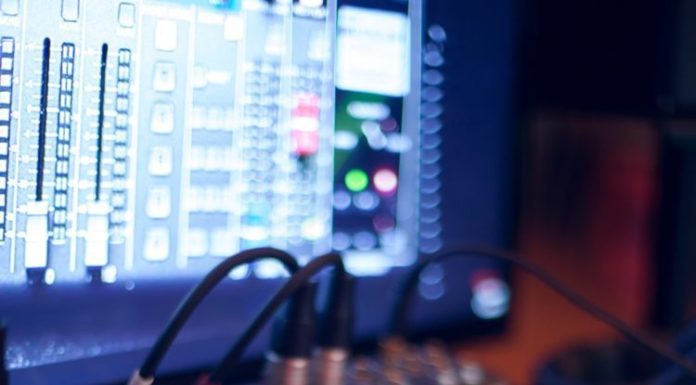
![5 Best 49 Key MIDI Controllers 2022 [Reviews & Buyer’s Guide] best 49key midi keyboards](https://homestudiohub.com/wp-content/uploads/2020/03/best-49key-midi-keyboards-80x60.jpg)






